Complete Solutions to Exercise 5.2 of chapter KINEMATICS-2 of Class 11 book with complete answers and questions
| Class 11 | PHYSICS |
| Chapter | KINEMATICS-2 |
| CENGAGE PHYSICS | Exercise 5.2 |
| Number Of Questions | 25 |
| Academic Year | 2023-24 |
A body of mass `2 kg` has an initial velocity of `3 m s^-1` along `OE` and it is subjected to a force of `4 N` in `O F` direction perpendicular to `O E`. Find the distance of the body from `O` after `4 s`.
 .03:39View Solution
.03:39View SolutionA particle `P` is projected with velocity `u_1` at an angle of `30^@` with the horizontal. Another particle `Q` is thrown vertically upwards with velocity `u_2` from a point vertically below the highest point of path of `P`. Determine the necessary condition for the two particles to collide at the highest point.
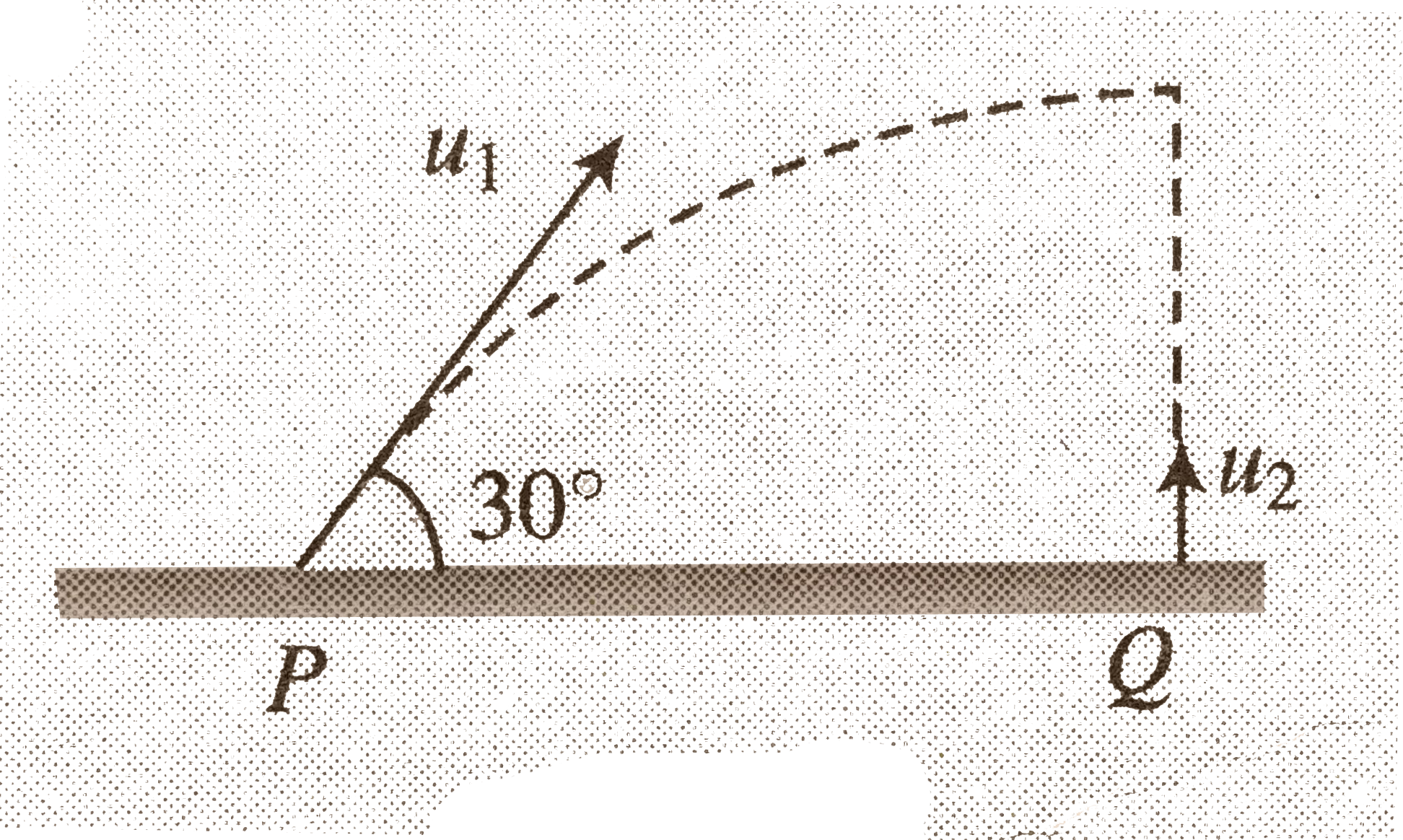 .04:04View Solution
.04:04View SolutionTwo seconds after projection, a projectile is travelling in a direction inclined at `30^@` to the horizontal. After one more second, it is travelling horizontally. Find the magnitude and direction of its velocity.
06:12View SolutionTwo particles are separated at a horizontal distance `x` as shown in (Fig. 5.57). They are projected at the same time as shown in the figure with different initial speed. Find the time after which the horizontal distance between the particles becomes zero.
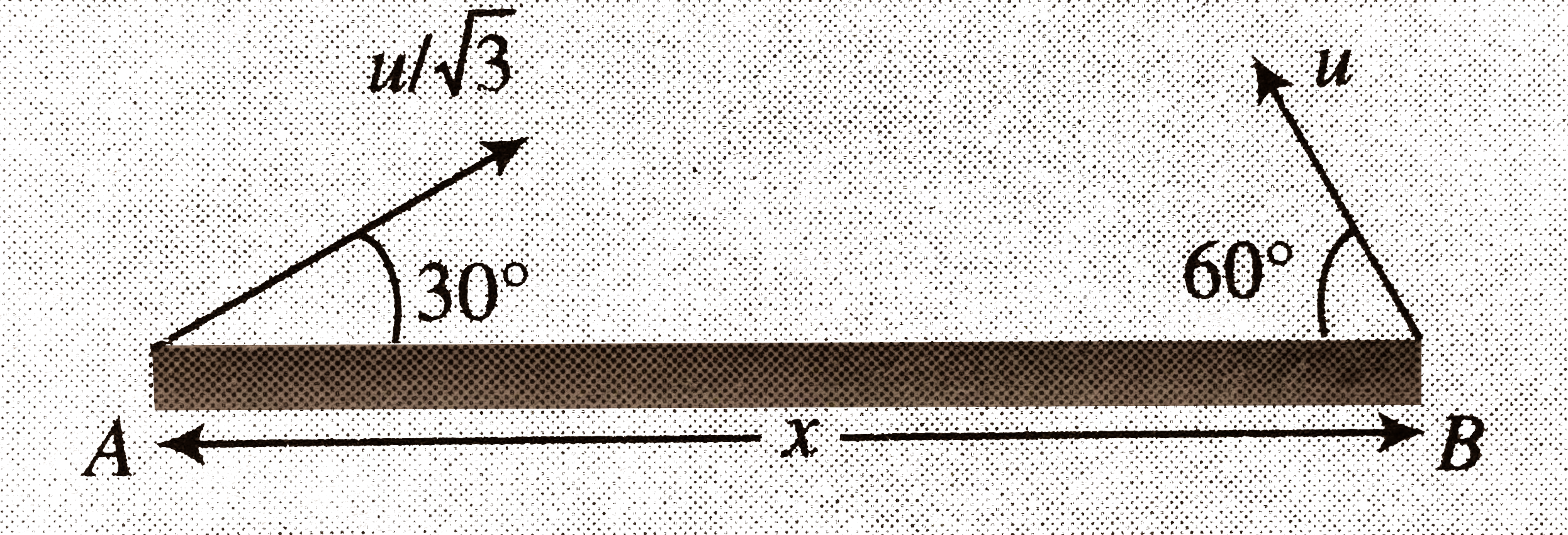 .05:17View Solution
.05:17View SolutionA ball rolls off top of a staircase with a horizontal velocity `u m s^-1`. If the steps are `h` metre high and `b` mere wide, the ball will just hit the edge of `n th` step. Find the value of `n`.
02:16View SolutionA body is projected horizontally from the top of a tower with initial velocity `18 m s^-1`. It hits the ground at angle `45^@`. What is the vertical component of velocity when it strikes the ground ?
02:13View SolutionA man standing on the roof a house of height `h` throws one particle vertically downwards and another particle horizontally with same velocity `u`. Find the ratio of their velocities when they reach the earth's surface.
03:26View SolutionA staircase contains three steps each 10 cm high and 20 cm wide figure. What should be the minimum horizontal velocity of a bal rolling off the upper most plane so as to hit directly the lowest plane?
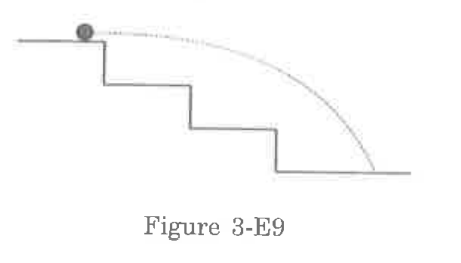 03:15View Solution
03:15View SolutionFor a given velocity of projection from a point on the inclined plane, the maximum range down the plane is three times the maximum range up the incline. Then find the angle of inclination of the inclined plane.
04:32View SolutionA shell is fired from a gun from the bottom of a hill along its slope. The slope of the hill is `prop = 30^@` and the angle of the barrel to the horizontal `beta = 60^@`. The initial velocity `v` of the shell is `21 m s^-1`. Then find the distance of point from the gun at which the shell will fall.
03:30View SolutionThe maximum range of a rifle bullet on the horizontal ground is `6 km`. Find its maximum range on an inclined of `30^@`.
03:04View SolutionA motorcycle stunt rider rides off the edge of a cliff. Just at the edge his velocity is horizontal, with magnitude `9.0 m s^-1`. Find the motorcycle's position, distance from the edge of the cliff and velocity after `0.5 s`.
07:11View SolutionAn object is thrown between two tall buildings `180 m` from each other. The object thrown horizontally from a window `55 m` above the ground from one buiding strikes a window `10 m` above the ground in another building. Find out the speed of projection.
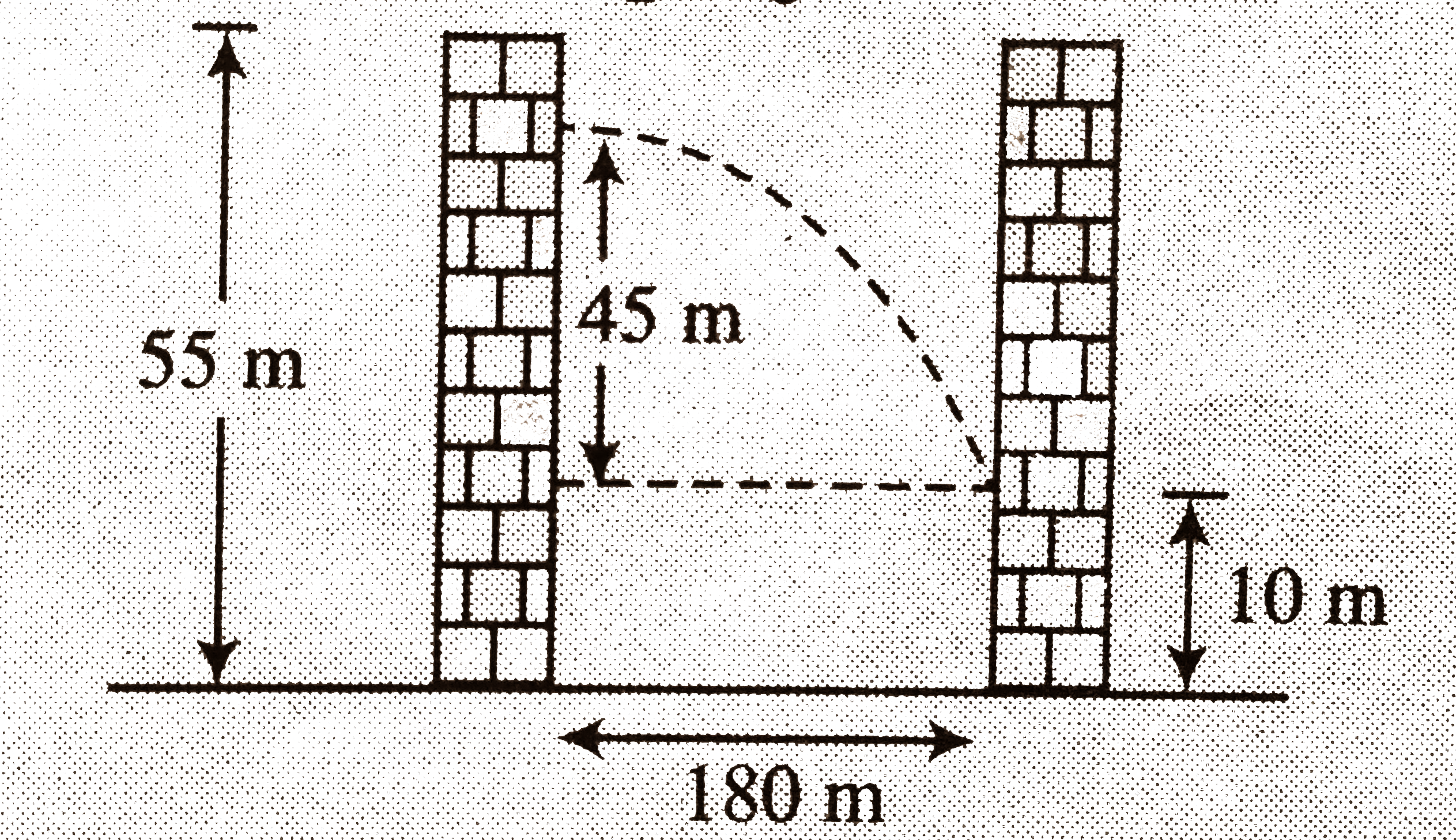 .03:05View Solution
.03:05View SolutionA fighter plane moving with a speed of `50 sqrt(2) m s^-1` upward at an angle of `45^@` with the vertical releases a bomb when it was at a height `1000 m` from ground. Find
(a) the time of flight
(b) the maximum height of the bomb above ground.05:04View SolutionA bullet is fired from the bottom of the inclined plane at angle `theta = 37^@` with the inclined plane. The angle of incline is `30^@` with the horizontal. Find the
(a) position of the maximum height of the bullet from the inclined plane ,
(b) time of light ,
( c) range along the incline ,
(d) the value of `theta` at which the range will be maximum ,
( e) maximum range.07:46View SolutionTwo paper screens A and B are separated by 150m. A bullet pierces A and B. The hole in B in 15 cm below the hole in A. If the bullet is travelling horizontally at the time of hitting A, then the velocity of the bullet at A is: `(g=10ms^(-2))`
04:22View SolutionTwo stones `A and B` are projected simultaneously from the top of a `100 - m` high tower. Stone `B` is projected horizontally with speed `10 ms^-1`, and stone `A` is droppd from the tower. Find out the following :
(a) Time of flight of the two stone
(b) Distance between two stones after `3 s`
(c ) Angle of strike with ground
(d) Horizontal range of particle `B`.08:27View SolutionOn an inclined plane two particles `A and B` are projected with same speed at the same angle with the horizontal, particle `A` down and particle `B` up the plane. If the ratio of time of flight of `A and B` is `cot theta`, where `theta` is the angle at which `B` is projected measured from inclined plane, find the angle at which particles are projected.
05:34View SolutionAn particle is projected with velocity `u` on an inclined plane at an angle `theta` with the plane. If the particle lands on the plane at right Angle and its time of flight is `(u cosec theta)/(2 g)`. Find the angle of inclination of the plane with horizontal.
04:03View SolutionThe horizontal range (R ) of a projectile becomes (R + 2 H) from `R` due to a wind in horizontal direction. Here `H` is the maximum height reached by the projectile. What constant horizontal acceleration is imparted by the wind ?
05:49View SolutionA boy is running along positive x - axis with `9 m//s`. While running he manages to throw a stone in a plane perpendicular to his direction of running with velocity `12 m//s` at an angle `30^@` with vertical. Find the speed of the stone at the highest point of the trajectory.
03:36View SolutionTwo guns are situated at the top of a hill firing the shots at the same speed. One gun fires the shot horizontally and other gun fires the shot at an angle of `60^@` with horizontal. Two two shots collide in air. If the time taken by horizontal shot to reach the point of collision in `3 seconds`, find the time interval between two shots.
03:48View SolutionA ball is thrown horizontally from the top of a tower and strikes the ground in `3 s` at an angle of `30^@` with the vertical.
(a) Find the height of the tower.
(b) Find the speed with which the body was projected.04:10View SolutionA particle is projected on an inclined plane with a speed `u` as shown in (Fig. 5.61). Find the range of the particle on the inclined plane.
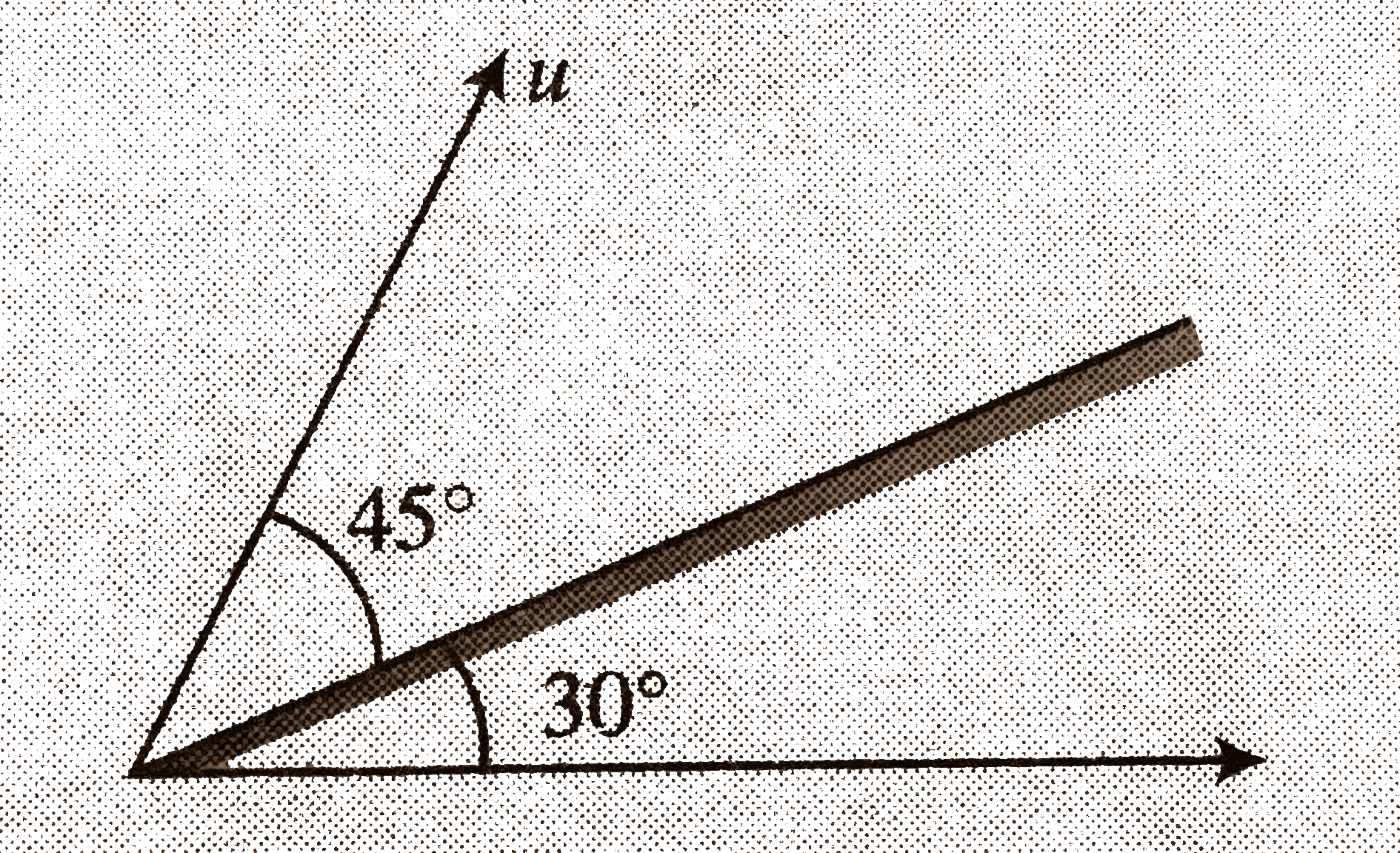 .06:53View Solution
.06:53View SolutionThere are three paths `a,b and c` of a projectile projected from point `P` as shown in (Fig. 5.62). Prove that `v_1 gt v_2 and v_3 = v_4`. Which path is correct ?
 .04:22View Solution
.04:22View Solution
Exercise 5.2 questions and complete solutions for chapter KINEMATICS-2 of CENGAGE PHYSICS (HINGLISH) of Class 11
